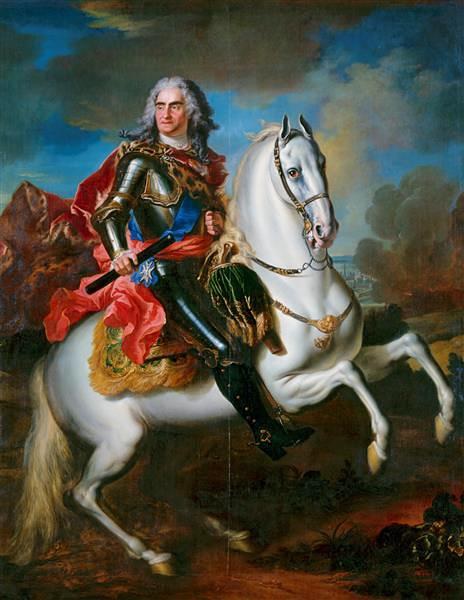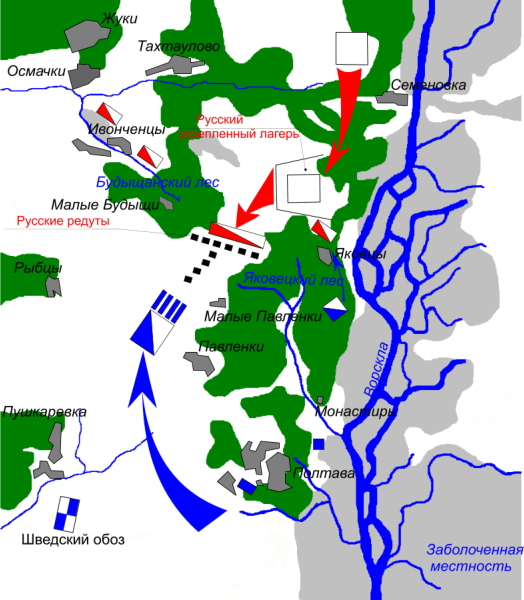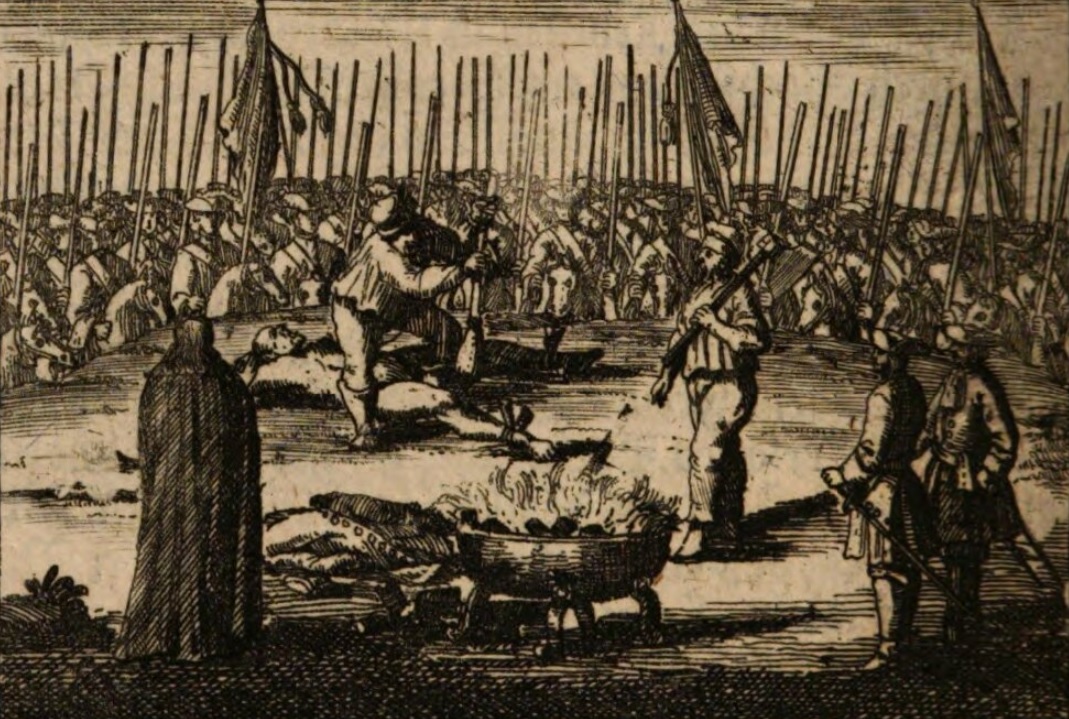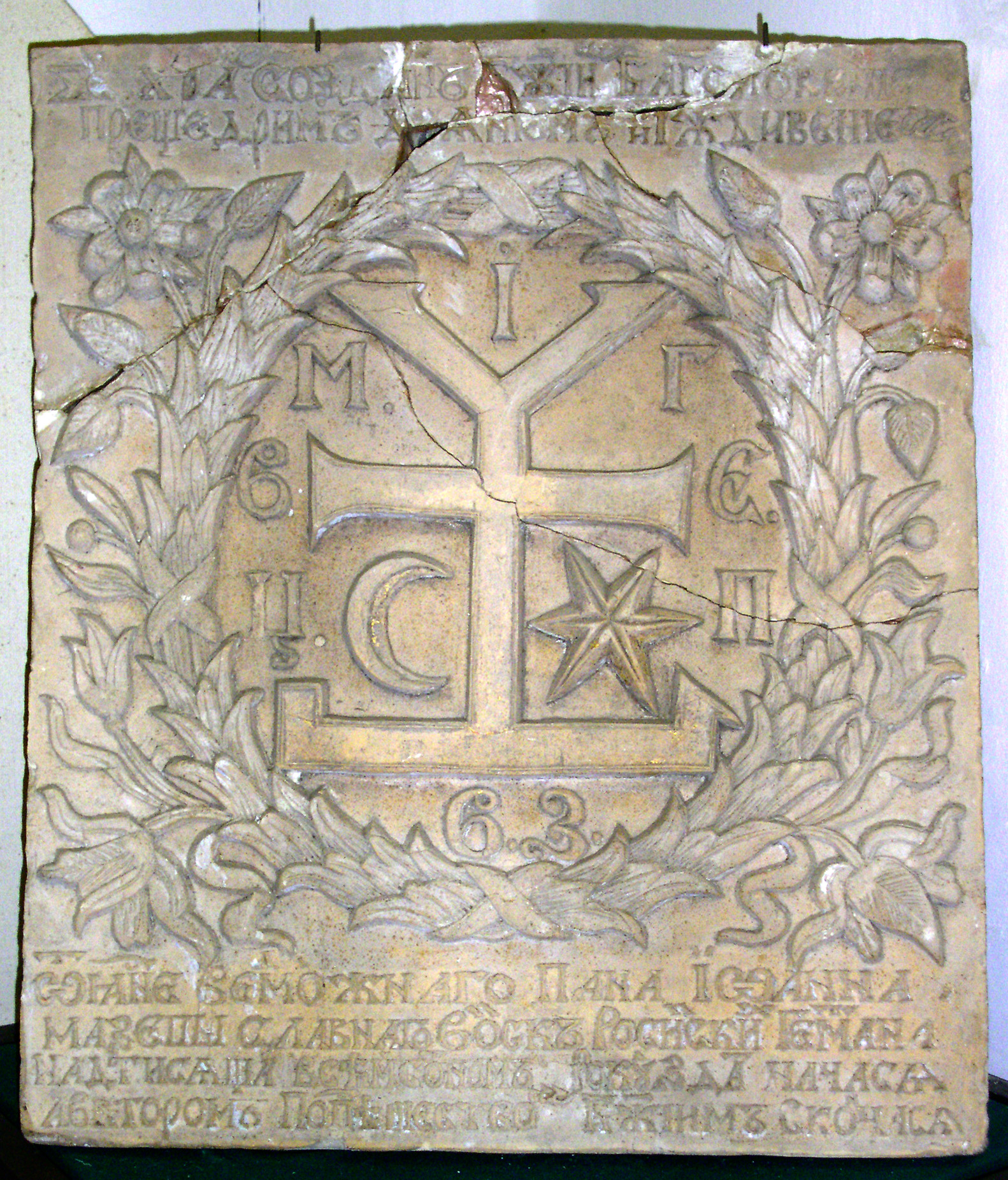|
Campaign Of Grodno
The Campaign of Grodno was a plan developed by Johann Patkul and Otto Arnold von Paykull during the Charles XII invasion of Poland, Swedish invasion of the Polish–Lithuanian Commonwealth, a part of the Great Northern War. Its purpose was to crush Charles XII, Charles XII's army with overwhelming force in a combined offensive of Russian and Saxon troops. The campaign, executed by Peter the Great, Peter I of Russia and Augustus II the Strong, Augustus II of Saxony, began in July 1705 and lasted almost a year. In divided areas the allies would jointly strike the Swedish troops occupied in Poland, in order to neutralize the influence the Swedes had in the Polish politics. However, the Swedish forces under Charles XII successfully outmaneuvered the allies, installed a Polish king in favor of their own and finally won two decisive victories at Battle of Grodno (1706), Grodno and Battle of Fraustadt, Fraustadt in 1706. This resulted in the Treaty of Altranstädt (1706) in which August ... [...More Info...] [...Related Items...] OR: [Wikipedia] [Google] [Baidu] |
Gregorian Calendar
The Gregorian calendar is the calendar used in most parts of the world. It was introduced in October 1582 by Pope Gregory XIII as a modification of, and replacement for, the Julian calendar. The principal change was to space leap years differently so as to make the average calendar year 365.2425 days long, more closely approximating the 365.2422-day 'tropical' or 'solar' year that is determined by the Earth's revolution around the Sun. The rule for leap years is: There were two reasons to establish the Gregorian calendar. First, the Julian calendar assumed incorrectly that the average solar year is exactly 365.25 days long, an overestimate of a little under one day per century, and thus has a leap year every four years without exception. The Gregorian reform shortened the average (calendar) year by 0.0075 days to stop the drift of the calendar with respect to the equinoxes.See Wikisource English translation of the (Latin) 1582 papal bull '' Inter gravissimas''. Second, ... [...More Info...] [...Related Items...] OR: [Wikipedia] [Google] [Baidu] |
Charles XII
Charles XII, sometimes Carl XII ( sv, Karl XII) or Carolus Rex (17 June 1682 – 30 November 1718 O.S.), was King of Sweden (including current Finland) from 1697 to 1718. He belonged to the House of Palatinate-Zweibrücken, a branch line of the House of Wittelsbach. Charles was the only surviving son of Charles XI and Ulrika Eleonora the Elder. He assumed power, after a seven-month caretaker government, at the age of fifteen. In 1700, a triple alliance of Denmark–Norway, Saxony– Poland–Lithuania and Russia launched a threefold attack on the Swedish protectorate of Holstein-Gottorp and provinces of Livonia and Ingria, aiming to draw advantage as the Swedish Empire was unaligned and ruled by a young and inexperienced king, thus initiating the Great Northern War. Leading the Swedish army against the alliance, Charles won multiple victories despite being usually significantly outnumbered. A major victory over a Russian army some three times the size in 1700, at the Ba ... [...More Info...] [...Related Items...] OR: [Wikipedia] [Google] [Baidu] |
Sweden
Sweden, formally the Kingdom of Sweden,The United Nations Group of Experts on Geographical Names states that the country's formal name is the Kingdom of SwedenUNGEGN World Geographical Names, Sweden./ref> is a Nordic country located on the Scandinavian Peninsula in Northern Europe. It borders Norway to the west and north, Finland to the east, and is connected to Denmark in the southwest by a bridgetunnel across the Öresund. At , Sweden is the largest Nordic country, the third-largest country in the European Union, and the fifth-largest country in Europe. The capital and largest city is Stockholm. Sweden has a total population of 10.5 million, and a low population density of , with around 87% of Swedes residing in urban areas in the central and southern half of the country. Sweden has a nature dominated by forests and a large amount of lakes, including some of the largest in Europe. Many long rivers run from the Scandes range through the landscape, primarily ... [...More Info...] [...Related Items...] OR: [Wikipedia] [Google] [Baidu] |
Treaty Of Thorn (1709)
Concluded on 9 October 1709, the Treaty of Thorn was an agreement signed in Thorn (Toruń) between Augustus the Strong of the Polish-Lithuanian Commonwealth and his counterpart, Peter the Great the Tsar of Russia. Through this agreement, the two parties revived an alliance from an earlier treaty between them in 1699, which their common rival Charles XII of Sweden had dismantled through the 1706 Treaty of Altranstädt. In the 1709 treaty, the two parties agreed to restore the Polish crown to Augustus among various other provisions with different implications for both parties and their respective nations. A close examination of the background to the agreement as well as the terms, implementation, and implications of the Treaty of Thorn underscores its significance in marking the Tsar’s and Russia’s ascendance into a powerful regional player in northeastern Europe. Background During the Great Northern War, a resounding Russian victory had brought down Charles XII and his Polish ... [...More Info...] [...Related Items...] OR: [Wikipedia] [Google] [Baidu] |
Battle Of Poltava
The Battle of Poltava; russian: Полта́вская би́тва; uk, Полта́вська би́тва (8 July 1709) was the decisive and largest battle of the Great Northern War. A Russian army under the command of Tsar Peter I defeated a Swedish army, under the command of Carl Gustaf Rehnskiöld. The battle put an end to the status of the Swedish Empire as a European great power, as well as its eastbound expansion, and marked the beginning of Russian hegemony in Northern Europe. During the course of six years in the initial stages of the war, King Charles XII and the Swedish Empire had defeated almost all participants in the anti-Swedish coalition, which initially consisted of the Polish-Lithuanian Commonwealth, Denmark-Norway and the Tsardom of Russia. The latter under Tsar Peter I's rule was the only one still undefeated. Charles XII therefore chose to invade Russia in the autumn of 1707 and march towards Moscow with a large Swedish army. However, the campaign w ... [...More Info...] [...Related Items...] OR: [Wikipedia] [Google] [Baidu] |
Treaty Of Altranstädt (1706)
The Treaty of Altranstädt was concluded between Charles XII of Sweden and Augustus the Strong of Saxony and Poland–Lithuania, on 13 October 1706, during the Great Northern War. Augustus had to renounce his claims to the Polish throne and his alliance with Russia. Background On behalf of Charles XII, who had occupied much of the Polish–Lithuanian Commonwealth during the Great Northern War, Stanisław Leszczyński was crowned king of Poland on 4 October 1705.Bromley (1970), p. 699 A faction of the commonwealth, organized in the Sandomierz Confederation, remained loyal to Saxon elector Augustus the Strong, Polish king since 1697 and allied against Charles XII with Russian tsar Peter the Great.Anisimov (1993), pp. 103-104 The resulting civil war in Poland (1704-1706) did not go well for August. His attempt to regain control in Poland–Lithuania was thwarted by Charles XII in the Battle of Grodno and by Carl Gustav Rehnskiöld in the Battle of Fraustadt, both in the ... [...More Info...] [...Related Items...] OR: [Wikipedia] [Google] [Baidu] |
Battle Of Fraustadt
The Battle of Fraustadt was fought on 2 February 1706 ( O.S.) / 3 February 1706 (Swedish calendar) / 13 February 1706 ( N.S.) between Sweden and Saxony-Poland and their Russian allies near Fraustadt (now Wschowa) in Poland. During the Battle of Fraustadt on February 3, August II was only 120 km away, with a cavalry force about 8,000 men strong. That was one of the main reasons that Swedish General Rehnskiöld hurried to engage Schulenburg. The battle is an example of a successful pincer movement and was one of Sweden's greatest victories in the Great Northern War. Background After King Karl XII's of Sweden victory against the Saxon-Russian army in the Battle of Düna, he was able to begin his campaign against Poland. After the victory at the Battle of Kliszów in July 1702, Karl XII negotiated to depose August II from the throne of Poland, but to no avail. The Swedish army then subjected the well-fortified city of Thorn (Torun) on the river Weichsel to a long-term block ... [...More Info...] [...Related Items...] OR: [Wikipedia] [Google] [Baidu] |
Battle Of Grodno (1706)
The Battle of Grodno (1706) refers to the battle during the Great Northern War. Grodno was a city of the Polish–Lithuanian Commonwealth at this time. Background Battle The blockade of Grodno by the 31,000 men (21,000 Swedes, 10,000 Poles) strong Swedish–Polish army took place between January and March 1706 (3,000 Swedes had already died due to frostbite prior to the arrival). In the city and close vicinity there were about 41,000 Russian and Saxon troops under the command of General Field-Marshall Ogilvy as well as general Repnin. On 13 January 1706 the Swedish army coming from Poland crossed the Neman River and squeezed out the Russian cavalry units of Menshikov towards Minsk, cutting of all connections to Russia for the Grodno garrison. The situation of the Russian troops was made even more difficult after the allied Polish-Lithuanian king Augustus II quickly left Grodno in Polish direction, taking four Russian dragoon regiments with him. As a result, the Grodno garri ... [...More Info...] [...Related Items...] OR: [Wikipedia] [Google] [Baidu] |
Otto Arnold Von Paykull
Otto Arnold von Paykull (c.1662 – 4 February 1707) was a Livonian Officer (armed forces), officer in the service of the Electorate of Saxony. Early life Otto Arnold von Paykull was born around 1662 in Swedish Livonia. He was a page at the Royal Court of Saxony in 1677 and in 1678 he joined the Saxonian Guard. Military career After some years in French service von Paykull returned to Saxony where he eventually became Lieutenant General around 1700. He was part of the Royal Saxon Army, Saxonian army that tried to stop the Swedish Crossing of the Daugava in 1701. He was injured during this fight and left the service for some years, but returned in 1704 to command a cavalry regiment. In 1705, von Paykull was captured by the Swedes at the Battle of Warsaw (1705), Battle of Warsaw. He was brought to Stockholm where he was executed on 4 February 1707 for high treason due to his service for Saxony, though being born in a Swedish province. Known as an Alchemy, alchemist, he tried to ... [...More Info...] [...Related Items...] OR: [Wikipedia] [Google] [Baidu] |
Johann Patkul
Johann Reinhold Patkul (27 July 1660 – 10 October 1707) was a Swedish Livonia, Livonian nobleman, politician and agitator of Baltic Germans, Baltic German extraction. Born as a subject to the Swedish Crown, he protested against the manner of King Charles XI of Sweden's Reduction (Sweden), reduction in Livonia, enraging the king, who had him arrested and sentenced to mutilation and death (1694). Patkul fled from the Swedish Empire to continental Europe, and played a key role in the secret diplomacy (1698-1699) Treaty of Preobrazhenskoye, allying Peter the Great, Peter I of Russian Empire, Russia, Augustus II the Strong of Electorate of Saxony, Saxony and the Polish–Lithuanian Commonwealth, Poland–Lithuania - as well as Christian V of Denmark, Christian V and his successor Frederick IV of Denmark, Frederick IV of Denmark–Norway - against Charles XII of Sweden, triggering the Great Northern War of 1700-1721. Patkul was close friends with the Danish Privy Councillor Knud Tho ... [...More Info...] [...Related Items...] OR: [Wikipedia] [Google] [Baidu] |
Stanisław Ernest Denhoff
Stanisław Michał Ernest Denhoff (; ; c. 1673 – 2 August 1728) was a Polish–Lithuanian Commonwealth aristocrat, Grand Master of the Hunt of Lithuania (from 1697), Grand Chorąży of the Crown (1704–1721), voivode of Połock (1721–1728), politician and a military commander (Field Hetman of Lithuania, 1709–1728). He was a Starost of numerous territories (nowokorczyński, kałuski, kościerski, lubocheński, mozyrski, latowicki, lucyński, zydekański). Biography He was born a member of the Denhoff family, a Polish–Lithuanian Commonwealth noble family of the Baltic German origin (the German family name was Dönhoff). His place of birth was Kościerzyna (Berent), Poland, in the region of Royal Prussia. He was Grand Master of the Hunt of Lithuania since 1697. He was one of the organizers and a marshal of the Sandomierz Confederation in 1704, which supported the election of Augustus II the Strong (Augustus II of Poland) to the Polish throne. In recognition of his s ... [...More Info...] [...Related Items...] OR: [Wikipedia] [Google] [Baidu] |
Ivan Mazepa
Ivan Stepanovych Mazepa (also spelled Mazeppa; uk, Іван Степанович Мазепа, pl, Jan Mazepa Kołodyński; ) was a Ukrainian military, political, and civic leader who served as the Hetman of Zaporizhian Host in 1687–1708. He was awarded a title of Prince of the Holy Roman Empire in 1707 for his efforts for the Holy League. The historical events of Mazepa's life have inspired many literary, artistic and musical works. He was famous as a patron of the arts. Mazepa played an important role in the Battle of Poltava (1709), where after learning that Tsar Peter I intended to relieve him as acting Hetman (military leader) of Zaporozhian Host (a Cossack state) and to replace him with Alexander Menshikov, he defected from his army and sided with King Charles XII of Sweden. The political consequences and interpretation of this defection have resonated in the national histories both of Russia and of Ukraine. The Russian Orthodox Church laid an anathema (excommunica ... [...More Info...] [...Related Items...] OR: [Wikipedia] [Google] [Baidu] |









